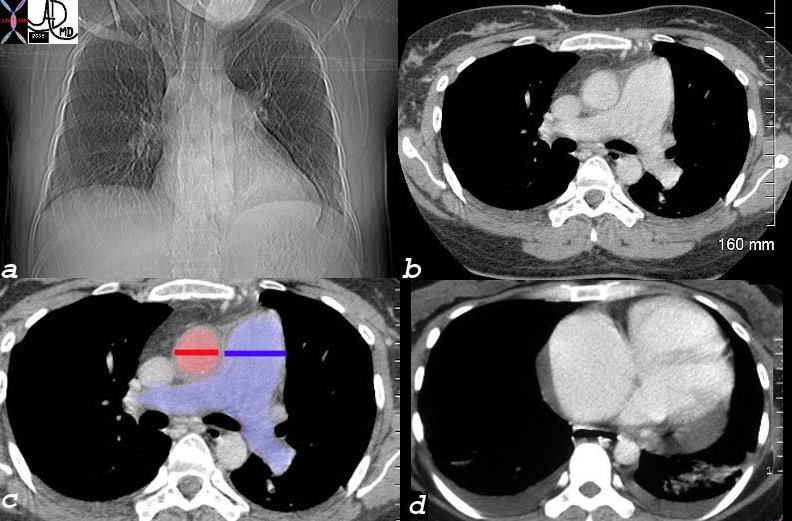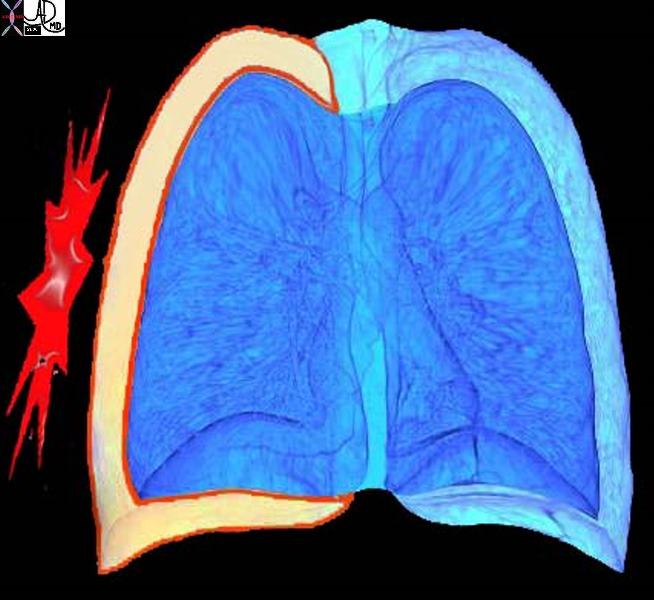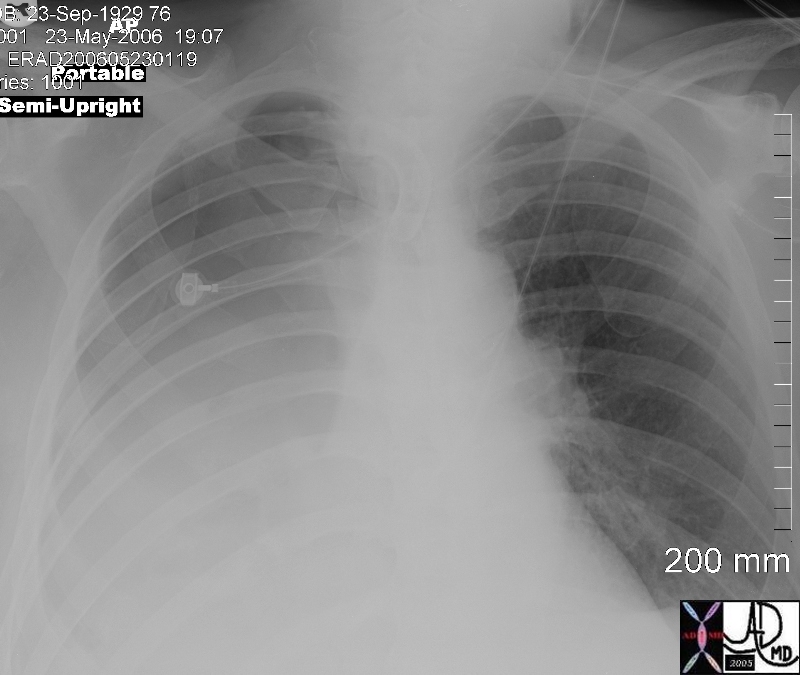Pleurisy
Copyright 2008
Definition
Pleurisy is an inflammatory disorder of the pleura, having a multitude of causes but resulting in pleuritic pain, and pleural effusion.
The pain as stated is usually pleuritic but can be dull, burning sharp or stabbing. It is relatively acute in onset and can be quite severe (6-7/10). It is aggravated by coughing and deep breaths, and may be relieved by shallow breaths, and lying with the affected side down because chest wall motion is limited. Antiinflammatory medications may relieve the pain. Associated symptoms may include fever, cough, or productive cough.
The diagnosis is suspected clinically by the historyand dullness to percussion, whispering pectiriloqouy reflect an effusion. A pleural friction rub may be heard.
The chest X-ray helps making the diagnosis of a pleural effusion and in the appropriate clinical setting will confirm the clinical suspicion. Rib films if a fracture is suspected are indicated.
Treatment is directed to the cause but symptomatic treatment includes ibuprofen, indomethacin or naproxen.
|
Pleuritic Pain and Effusion – Pleurisy |
|
The pleuritic pain is sharp, severe, and aggravated by deep breathing and coughing and relieved by shallow breathing and lying ipsilateral side down. The image on the right shows an overall increase in density of the right chest suggestive of a pleural effusion which is non specific and may accompany many of the diseases discussed. 42540c08 44665 Davidoff Art Courtesy Ashley DAvidoff MD copyright 2009 |
Treatment is directed to the cause but symptomatic treatment includes ibuprofen, indomethacin or naproxen

Pulmonary Hypertension – Scleroderma |
|
This unfortunate 32 year old female with scleroderma has many causes for chest pain but the cause under discussion is a relatively uncommon cause for chest pain – pulmonary hypertension. This is best diagnosed with echocardiogram or cardiac catherization but in this CT the large pulmonary artery (blue – which should be the same size of the red aorta normally) is indicative of pulmonary hypertension. Her heart is enlarged (a) and she has a pericardial effusion, and bilateral pleural effusions (d) both of which can cause pain. In addition she has an enlarged patulous esophagus (seen as a black slit behind the heart (d) characteristic of scleroderma, and associated with reflux which is another cause for chest pain. 30464c12 32 female lungs pleura heart cardiac RA RV right ventricle right atrium pericardium esophagus ILD basal interstitial lung disease pericardial effusion pleural effusion cardiomegaly enlarged esophagus patulous esophagus gallbladder wall edema congestive cardiac failure RHF right heart failure rifht ventricular enlargement RVE RAE right atrial enlargement pulmonary hypertension cor pulmonale dx scleroderma Courtesy Ashley Davidoff MD |
References
References
Web References
Web References


